 |
SRGC Bulb Log Diary |
| Home Recommend This Site To A Friend |
|
BULB LOG 31 31st July 2003
A lot of you have been asking me about the pictures on the bulb log and digital photographs so this week I will explain a bit about the basics.
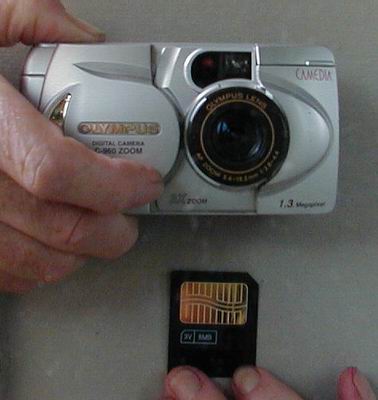
Olympus Firstly, this is the camera that I use, it is a 1.3 Megapixel Olympus Camedia C960 zoom. When buying a digital camera you are usually steered towards buying the most expensive that you can afford with the maximum number of pixels, this was the advice that I was given. However I decided that I would approach this step more logically and so I made a list of the things that I most wanted to use the camera for and this was to take pictures for web pages. These do not have to be big files: this picture is 400 x 378 and 20.9kbytes and is the basic size that I reduce the pictures to. These are both adequate to illustrate my points and quick to down load. The original file down loaded from the camera is 1280 x 960 and 196KB and I find that a good size of file, I have printed copies up to A4 size with perfectly acceptable results from this size of file. These files I should say are compressed and stored as jpeg. I have had to learn how to cope with a camera that does all the 'creative bits' like exposure and focus automatically. I have been using cameras since I was 12 and have always liked to be in control of all these settings, I have never liked the point and shoot cameras and here I was holding one. 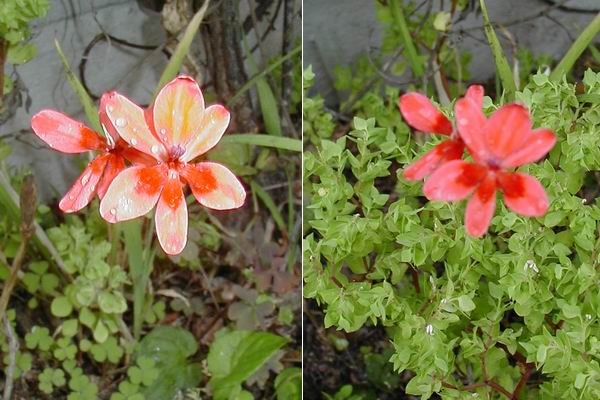
Lapeirousia x2 The auto focus system does not always focus on the important bit of the picture but instead it sees the back ground which is beautifully sharp while your main subject is blurred (right). There are two ways around this one, the first pressure on the button locks the exposure and the focus and you can carefully back off from the subject until you think the flower will be in focus, a trial and error process. The second is to use the flash which will mean that the aperture will reduce- which increases the depth of field ( the distance into the image that will appear in sharp focus), the compromise is you can lose the colours in some flowers as above left. Another point I have had made to me is that digital photographs seem to be sharper than film, this is also related to depth of field. The electronic imaging sensors of the digital camera are much more sensitive to light than standard film stock so your pictures are taken at a smaller aperture with greater depth of field. 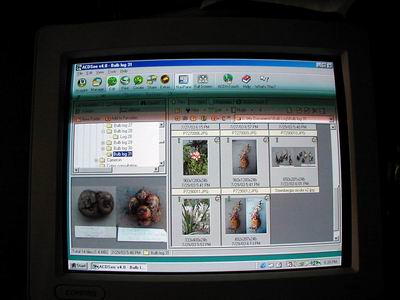
ACDSee The best part of digital photography is the many ways that you can manipulate your images in a computer. I use a program called ACDSee which is great for navigating around the thousands of digital pictures that I have. It also allows me to crop, resize, and adjust the pictures; all the pictures on the Bulb log have been processed only through ACDSee. 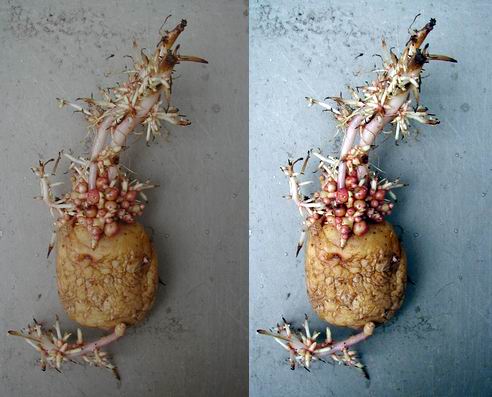
Tuber auto levels A typical tuber illustrates not only how some tubers grow but also shows the effect of adjusting the levels of a picture in the computer. On the left is the picture from the camera and on the right with auto levels applied. The changes you can make are limitless and some very bizarre effects can be achieved. 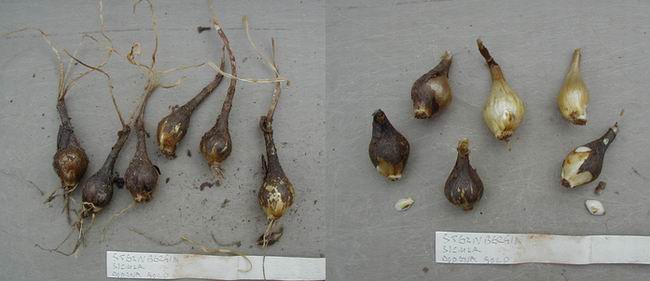
Sternbergia sicula x2. Another great tool which I use all the time in the log is pasting two or more images together. Here I want to illustrate how I clean up this type of bulb when I repot them, showing that I carefully remove old growth and roots to minimise the chance of fungal attack to the bulb. Tristagma leichtlinii flower bulb Here I can insert the picture of the Tristagma leichtlinii bulbs and seed, taken yesterday, onto the picture I took some months ago of the flowers. 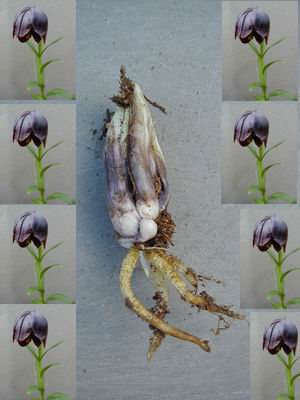
Lilium souliei Likewise I can enhance this picture of a Lilium souliei bulb by surrounding it with pictures of it in full flower. The instant nature of digital is also useful, it takes minutes to get an image and down load it into the computer. 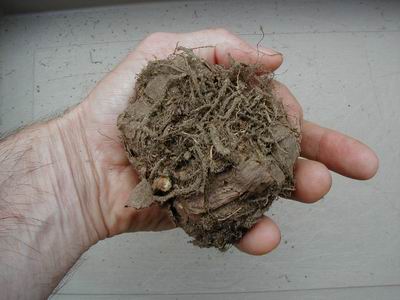
Corydalis maracandica Every year when I repot Corydalis maracandica I hope that it will have split but each year it just gets bigger and it has never yet produced any seed for me. Not like two of bulbs that I got from the great Latvian Bulb Grower Janis Ruksans 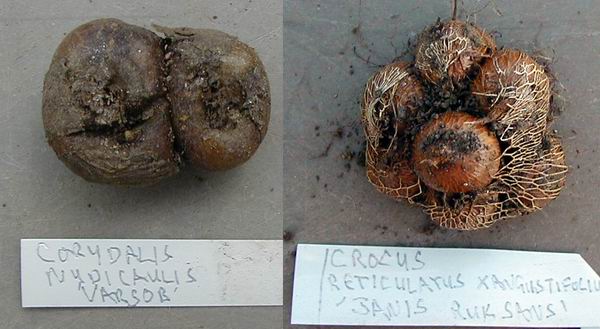
Corydalis and crocus Corydalis nudicaulis doubles each year and Crocus 'Janis Ruksans' a C. reticulatis x angustifolia cross has produced six extra corms in one year, it is also very floriferous producing a succession of flowers from a single corm. ^ back to the top ^ |